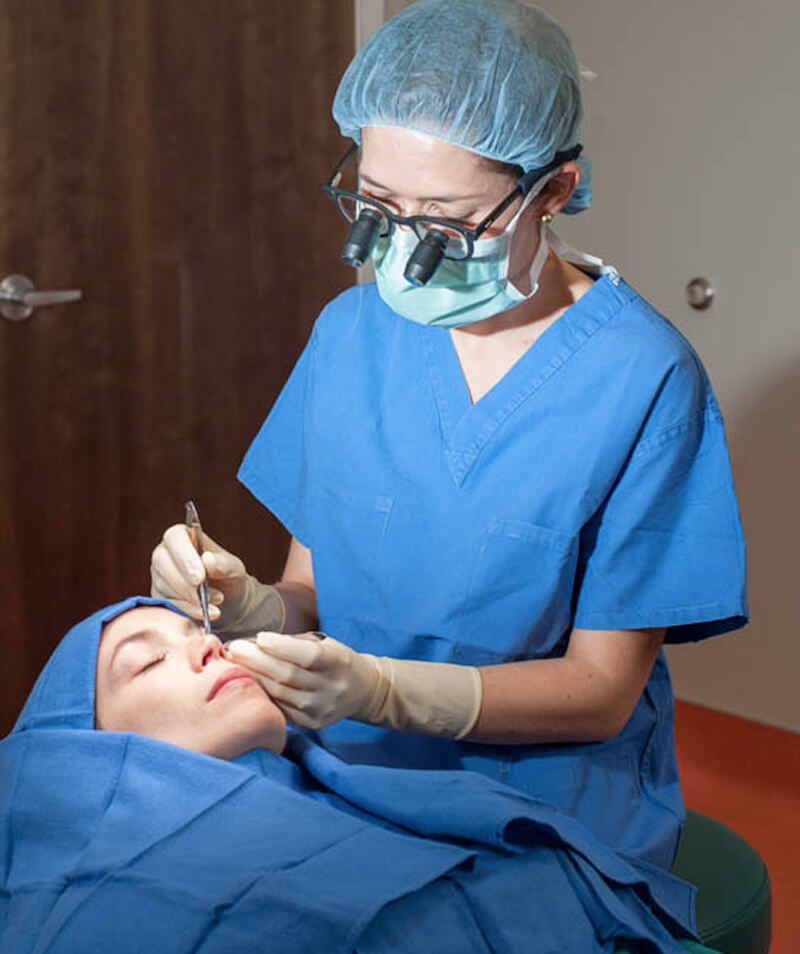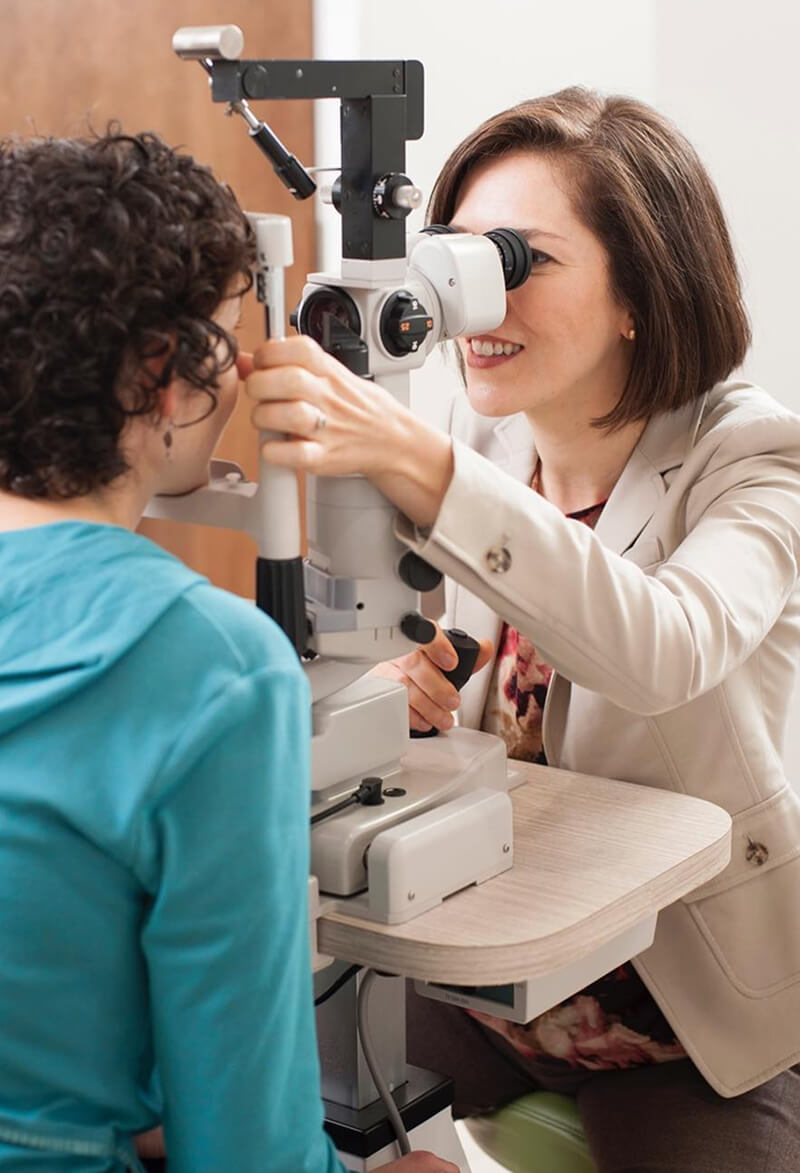Patients who develop abnormal twitching may benefit from Botox or Xeomin injections around the eyes. These products work by weakening the muscles that are erratically twitching or clamping shut, bringing relief to the patient. Dr. Schiedler may recommend the repetition of this treatment every few months in order to get the best results.
Facial Paralysis (Bell’s Palsy) / Facial Spasms

What Is Facial Paralysis?
- Dry eye on the affected side
- Drooling
- Difficulty chewing
- Changes in taste
- Pain around the jaw or behind the ear
- Increased sensitivity to sound on the affected side
- Headache
- Long-term muscle twitching or spasms
- Difficulty closing and blinking the eye on the affected side
- Viral infections such as influenza or shingles
- Trauma or injury to the facial nerve
- A tumor growing along the nerve
- Stroke
- Autoimmune conditions

“My experience at Oasis Eye was great! From the decor to the staff, I knew that my needs would be taken care of in the most professional caring matter. Dr. Schiedler, in my opinion, is an excellent ocular plastic surgeon; and I recommend her services.”
“Dr. Schiedler and staff were all wonderful. Everyone treated me with such respect, dignity and kindness. My post-op and pre-op questions were all answered with clarity. My wait time was minimal and my overall experience was excellent.”
“My experience with Dr. Schiedler and her staff was above and beyond amazing. Everyone was very professional, personal, and concerned about me throughout my whole treatment from start to finish. I would definitely recommend her to anyone needing the services Oasis Eye provides.”
“My experience was great! I needed a biopsy on my lower eyelid. Dr. Schiedler explained the entire process. The process was just how she explained to me and was in no way painful during or after the procedure.”
“Thank you for providing me such excellent care through each stage of my procedure. I am very pleased with the results and ever so appreciative of the attention and care all of you have provided. I have truly enjoyed each of you!”
“The success of my surgery with Dr. Schiedler was far in excess of my initial expectations. As far as I am concerned, Dr. Schiedler worked “miracles” with my sight and appearance. She completely corrected a congenital situation in one eye, and brought my other eye back to the way it looked 30 years earlier.”
“Dr. Schiedler did a lower eye retraction repair with a hard pallet graft which turned out amazing. So happy I got the surgery and it was virtually painless. Dr. Schiedler is very kind and caring and she takes the time to make sure you get the very best care.”
“I have been getting Botox/Xeomin injections for 15 years. I just recently moved here from San Francisco and she by far is the best that I have ever been too. She is extremely knowledgeable in her field. I am getting BBL and Halo Laser next week, I can’t wait! I am very fortunate to have found her.”
What is a Hemifacial Spasm?
Other causes of hemifacial spasm include:
- Tumor
- Trauma
- Stroke
- Poor or incomplete recovery from facial paralysis or Bell’s palsy
- Involuntary twitching on one side of the face
- Difficulty keeping the eye open while doing visual tasks such as reading
- A watery eye when chewing or eating (also known as crocodile tear syndrome)

What is Blepharospasm?
- Fatigue
- Stress
- Eye irritation
- Bright light
- Attempts to focus vision
- Driving through intermittent shadows
- Increased blinking
- Involuntary spasms of the eyelid
- Eyelids clamping shut
- Inability to open the eyes
- Light sensitivity
Treatment Options for Facial Paralysis and Facial Spasms
MRI
Stitching the Eyelids for Protection
Botox or Xeomin Injectables

Dr. Schiedler treats many patients with spasm disorders. Patients choose to come to Oasis Eye Face and Skin because they know that there will be minimum discomfort with these injections. Relying on a professional for these treatments decreases the odds of bruising and lets you get back to your daily activities faster. Dr. Schiedler customizes each treatment and always uses the lowest effective dose to minimize side effects such as dry eyes. She also uses several numbing techniques to help patients feel more relaxed and comfortable. All injections are performed by Dr. Schiedler personally, so patients can rest assured they are in very capable hands. She understands facial anatomy and looks at the face as a whole. This knowledge enables her to use just the right amount to achieve natural-looking and positive results.
Find Facial Paralysis and Spasm Relief with Dr. Vivian Schiedler
If you suffer from any form of facial paralysis or spasms, know you aren’t alone. Most importantly, you can rest assured that Oasis Eye Face and Skin, located in Ashland, OR, can help. Dr. Vivian Schiedler uses her precise skills and knowledge as an ophthalmologist and oculofacial plastic surgeon to diagnose and treat these debilitating and frustrating conditions. This helps you regain control over your facial expressions and achieve improved eye comfort. Don’t live with this condition any longer. Call (541) 449-9555 today to schedule a consultation with Dr. Schiedler!
